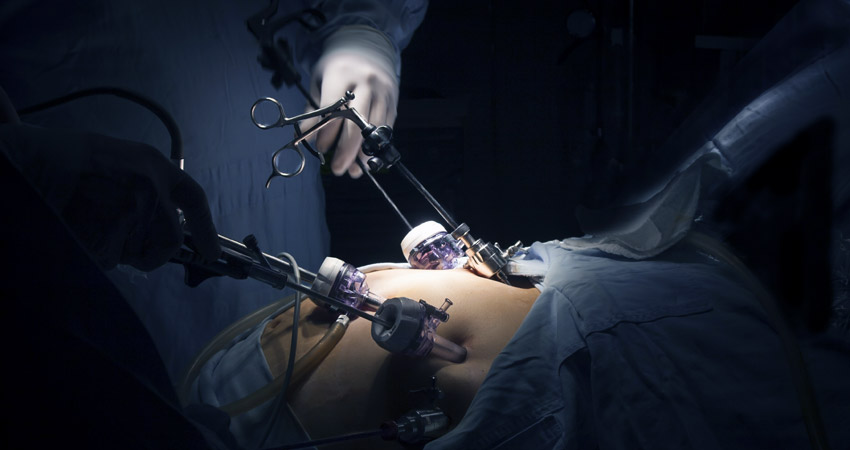
At Bangkok Hospital Pattaya, our expert doctors perform several procedures and minor surgery if needed.
Laparoscopy is a method of performing surgery. Instead of making a large incision for certain operations, surgeons make small incisions and insert tiny instruments and a camera, to view the internal organs and repair or remove tissue.
Early on, the technique of laparoscopy, sometimes referred to as keyhole surgery, was used only to diagnose conditions. Then doctors began to perform surgeries such as tubal sterilization in women using laparoscopy. The technique has evolved so much that operations that once required doctors to make a very large incision, such as to remove the gallbladder, can now all be done with this less invasive surgery.
For patients, laparoscopy can often mean a faster recovery from surgery, less time in the hospital or outpatient surgery center, and less trauma to the body. Doctors do not have to slice through large abdominal muscles to reach vital organs.
Laparoscopic instruments and techniques can be used for a variety of procedures, including knee and shoulder surgery. Operations now often performed laparoscopically include the following, among many others:
- Removal of organs such as the gallbladder or appendix
- Removal or repair of the colon or stomach (digestive system)
- Removal or repair of the bladder, ureters, or kidneys (urinary system)
- Removal or repair of women's reproductive organs, such as the uterus or fallopian tubes
- Tubal ligation
- Removal of a kidney in a living donor
- Weight-reduction procedures, such as gastric bypass
- Repair of a hernia
- To view the liver and pancreas for the presence of tumors
- To view the abdomen for signs of disease that has been difficult to diagnose (exploratory surgery)
- To view a tumor in the abdomen
- To check the source of abdominal pain or remove scar tissue
- To look for the source of internal bleeding or fluid buildup if the patient has a normal blood pressure
- To view injury following trauma or an accident
Laparoscopy Preparation
As with any surgery, food and drink are restricted for eight hours before the procedure, unless the surgery is done as an emergency. The patient is asked to sign a consent form that tells about the procedure and about its risks. Patients need to understand what the surgeon will do during the procedure and understand the answers to their questions.
General anesthesia is provided, which means the patient is asleep during the procedure. The anesthesiologist speaks with each patient about any drug allergies beforehand.
Recovery is much faster with laparoscopy than with regular (open) surgery. The procedure may even be performed on an outpatient basis, meaning the patient can return home the same day of the procedure.
Patients planning to undergo laparoscopy should speak with their doctor a few days before the procedure to ask whether they should continue to take their current medications. This is particularly important for people who take aspirin, blood thinners, or certain herbal supplements that can make it harder for the blood to clot.
During the Procedure
With laparoscopy, tiny fiber-optic instruments are inserted into the body through small surgical openings (thus the name "keyhole"). A person may have three or more small incisions. A video camera is inserted into one opening, which guides the surgeon who is manipulating the instruments. On the ends of these instruments are such devices as scissors, surgical staplers, scalpels, and suture materials. Abdominal laparoscopy involves the following steps:
- Once the patient is asleep, the surgeon makes a small cut near or at the navel and inserts a thin, hollow tube called a trocar. The tube extends from inside the abdomen to the outside.
- Carbon dioxide gas is injected into the abdomen to expand it and allow the doctor more room to view the organs.
- The laparoscope, a medical instrument with a high-intensity light and very tiny camera, is inserted into the abdomen through the trocar. The surgeon views a large image from the camera on a TV screen in the operating room.
- Other instruments are inserted into small incisions. The surgeon manipulates these to perform the procedure, whether it is removing an organ, taking a sample of tissue, or repairing an organ.
- The incisions are closed. Very small incisions may not require sutures, just small strips of sterile tape.
The patient is asleep and feels nothing during the procedure.
After the Procedure
-
Some pain or throbbing is possible where the small cuts were made. The doctor may recommend pain relief. If sutures were used, a follow-up appointment for their removal may be scheduled in a week or two.
- Sometimes the carbon dioxide gas can trigger shoulder pain after the procedure. The pain goes away over time.
- Pressure from the gas may cause a sensation of needing to urinate more often and more urgently. This sensation goes away over time.
- Once a person has sufficiently recovered, he or she can be sent home. Another person should drive.
Risks
Complications are rare, but as with any surgery, infection is a risk. Bleeding in the abdomen is also possible. Scars may develop. Anesthesia during surgery can trigger heart attack, stroke, and pneumonia, but these consequences are rare.
During laparoscopy, the following risks exist:
- The surgeon may puncture an organ. This could cause bleeding. If the colon is ruptured, its contents may spill into the abdomen.
- Scar tissue from previous operations could present a problem for the trocars to be inserted into the abdomen. Scar tissue could prevent the gas from expanding the abdomen.
If complications develop or are found, the surgeon may decide to proceed with a larger incision and a standard surgery rather than laparoscopy. This is a decision made with the patient's safety in mind.
Laparoscopic surgery on people who are obese can be complicated. Many doctors advise people to lose weight before surgery, if possible. Certain weight-loss surgeries are, however, now being performed laparoscopically.
Results
Results depend on which procedure was performed and what was found. In most cases, people recover quickly with minimal pain and discomfort because they have only small incisions to heal.
Patient Experience on Youtube at http://www.youtube.com/pattayahealth




